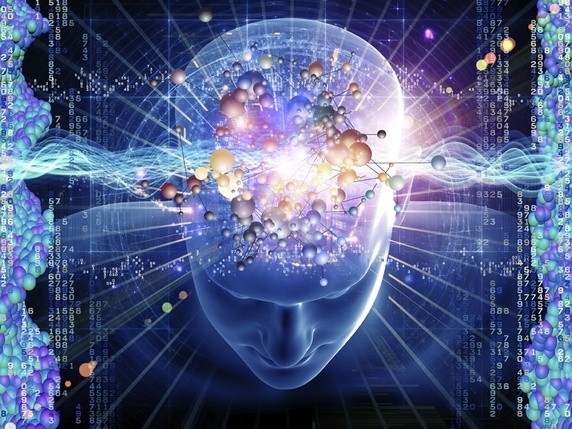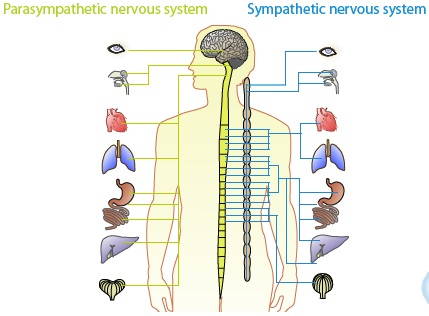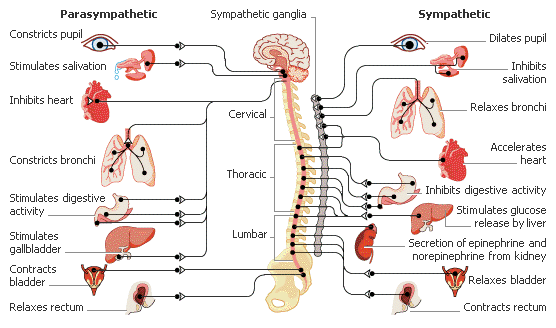Your Emotion of FEAR
Eric R. Kandel, M.D., is University Professor at Columbia University and Senior Investigator in its Howard Hughes Medical Institute.
“Emotion” refers to a broad range of affective responses that includes pleasure, elation, depression, fear, anxiety, anger, and calm.
Just as grief is a normal response to the loss of a loved one, so are transient fear and transient anxiety normal responses to threatening situations.
In fact, normal levels of anxiety are adaptive!
Like Dr. Kandel says, your emotions are designed for you to be adaptive! Your emotions allow you to adapt.
The Biology of Memory
Memory is a complicated and researchers still don’t know exactly how it works at the physiological level.
Long-term memory involves the hippocampus of the brain.
Questions being answered by my research about your memory include:
Does your memory change every time you think about the past?
Were your memory centers created to help you adapt?
Are their more senses available through your memories?
Does the hippocampus bind together different elements of a memory?
Where are memories stored?
Are memories stored in separate areas of the brain dealing with senses?
Why are some memories so detailed in your senses?
For example, memories of visual information end up in the visual cortex in most research studies.
Does the hippocampus help with memory organization?
Does the hippocampus help with memory consolidation or the transfer of information into long-term memory?
Psychologists also think that memory relates to changes in neurotransmitter release from neurons, fluctuations in hormone levels, and protein synthesis in the brain.
You’ll read my conclusions in future newsletters!
Dr. Kandel says, “Modern molecular biology allows us to study emotion and memory by zeroing in on specific genes, discerning the ones, for example, that are expressed only in the amygdala, the brain structure so critical to fear and anxiety. Now that we are beginning to understand these processes, our goal is to be able to determine which are critical for anxiety states, and then to try to develop pharmacological agents to counteract them.”
Great doctors, like Dr. Kandel, everywhere are trying to help you be more of yourself when you are not in fear!
My research considers you, thousands of years worth of medical literature and temple teachings.
You, your body, and all of the molecular biology within you is the best pharmacy you could ever experience!
This section below is adapted from:
Emotions and Your Nervous System
By K.G. Stiles
Your emotions are invisible energies in motion that move through you with lightning-fast speed, flooding you with signals of either pleasure or pain.
Like music notes in a symphony, your emotions enhance your world with contrast and meaning.
Emotions seem to have an interior life and will of their own.
Current research studies contend emotions are not purely mental activities generated by the brain.
Latest studies and ancient wisdom reveal that your emotions have as much to do with the body as with the brain.
Today, the idea of the body and brain being completely separate is fast being replaced.
Ancient wisdom, modern science, and moment by moment awareness reveal the holistic model of mind, body, and spirit being intimately connected.
New research now shows that you can consciously choose to influence the development of your mind and emotions.
Yes, it’s been discovered that your heart functions as a complex information and networking center.
In his book, The Biology of Belief, cellular biologist Bruce Lipton, PhD, shares current biomedical research about how your beliefs become your biology. With each heartbeat, your heart communicates with your body, heart and brain through your nervous system, hormonal system, electromagnetic fields and other energetic pathways. These internal communication networks also affect the way you perceive your reality, which greatly influences the emotions you experience.
Your emotions are perfectly reflected in your nervous system. Scientific research shows that your emotions stimulate very specific activities in your nervous system. This means that your nervous system has the intelligence to distinguish between positive and negative emotions, as well as between different negative emotions.
One of the easiest ways scientists have found to observe the effects of emotions on the nervous system is through monitoring heart rhythms. It has been discovered that intense emotions are clearly shown in your heart’s rhythms. For example, when you are experiencing intense emotions like fear, frustration, anxiety or anger, your heart rhythms are spiked and jagged and because there is a neural (nerve) connection between your heart and brain, your intense emotions greatly affect your ability to think clearly.
However, the opposite also is true for whenever you feel loved and appreciated as you generate internal feelings of emotional well-being and your heart rhythms become synchronized and harmonious and your ability to think clearly is enhanced.
The Relationship Between Emotions and Your Nervous System
Let’s look at some of the inner workings of your nervous system’s structure and how it communicates with your heart, brain and body. The nervous system is your body’s primary communications network. Your nerves, like wires, carry electrical signals or messages within and between all the parts of your body.
You have conscious or voluntary control over the sensory and motor systems of your central nervous system. The sensory branch of your central nervous system receives and transmits information from the outside world through your five senses (sound, sight, smell, taste and touch) to your brain. So, you can perceive the physical world around you while the motor branch of your central nervous system carries internal signals from your brain to your body, making it possible for you to walk, talk and perform actions in the world around you. The autonomic branch of your nervous system is non-conscious or involuntary, meaning you have no apparent control over its function. Your autonomic nervous system operates at a subconscious level to control all the functions of your internal organs and glands which secrete hormones.
It is your autonomic nervous system that is involved in your ability to feel emotions. In her groundbreaking audio CD, Your Body Is Your Subconscious Mind, neuroscientist Candace Pert, PhD, challenges long-standing assumptions about emotions and explains how your body always perfectly mirrors your unconscious thought patterns, the internal story you tell yourself and that your body speaks to you through your emotions. In fact, your emotions are the language of your subconscious mind.
Your autonomic nervous system has two branches of activity. The sympathetic (fight/flight) branch which speeds up your heart rate as it signals you to prepare for action, and the parasympathetic (relaxation) branch which slows down heart rate as it signals you for rest and recovery.
Different types of emotions send different messages through your nervous system to the heart, brain and body. You can feel your emotions rush through your body like cascading waves of energy. Constant streams of intense emotions like fear, frustration and anger are known to overtax your autonomic nervous system with stress signals, causing its neural networks to jam and is analogous to your driving with one foot on the gas pedal while the other is on the brake. Eventually, a chronic build-up of stress leads to autonomic nervous system imbalance; a state of chaos within your autonomic nervous system which results in your stress response getting stuck and remaining in the “on” position for fight or flight.
The autonomic nervous system is known to stimulate your hormonal production and response. Autonomic nervous system balance is an essential key for healthy functioning of the body, mind and emotions. Prolonged stress commonly is recognized as the primary cause of disease and premature death. “Vegetative dystony” is the term used to describe autonomic nervous system imbalance and its accompanying symptoms. Manifestations of autonomic nervous system imbalance include common symptoms of headache, hot flash, irregular heartbeat, nervousness, depression and anxiety.
According to Dr. Andrew Weil, medical vocabulary for imbalances of the autonomic nervous system practically do not exist in North American medicine. However, both Germany and Japan, two modern day industrial giants, acknowledge the condition and use the term “vegetative dystony.”
Our modern-day lifestyle promotes our living in a chronic condition of stress and subject to an increasing array of environmental toxins. These two conditions are cited as primary causes for autonomic nervous system imbalance and resulting hormonal disturbances.
The most potent antidote for overcoming autonomic nervous system imbalance is simple: Give yourself a nourishing diet of regularly feeling positive and uplifting emotions such as appreciation, love and compassion, to signal your nervous system to relax and promote an internal environment of peace and harmony.
Your positive emotions effectively allow the two branches of your autonomic nervous system to get in sync with each other. Then your body’s glands and organs will work together in harmony and your heart’s rhythms will become synchronized and harmonious. Dr. Candace Pert calls these signals that your subconscious mind sends through your autonomic nervous system the “molecules of your emotions.”
This new scientific understanding will help you better appreciate the importance of a regular practice of consciously choosing to influence your mind and emotions with positive, life-affirming messages.
Although the methods for reconditioning the habit patterns of your mind and emotions are simple to do, it’s your commitment to practicing them consistently until they become second nature that will empower you to effectively reduce long-term patterns of stress and promote health and well-being. The long-term benefits of one person’s choice to manage their emotions and neutralize negativity in the environment cannot be underestimated.
Release your fear Now
Write down Three Fears:
Read more Here:





